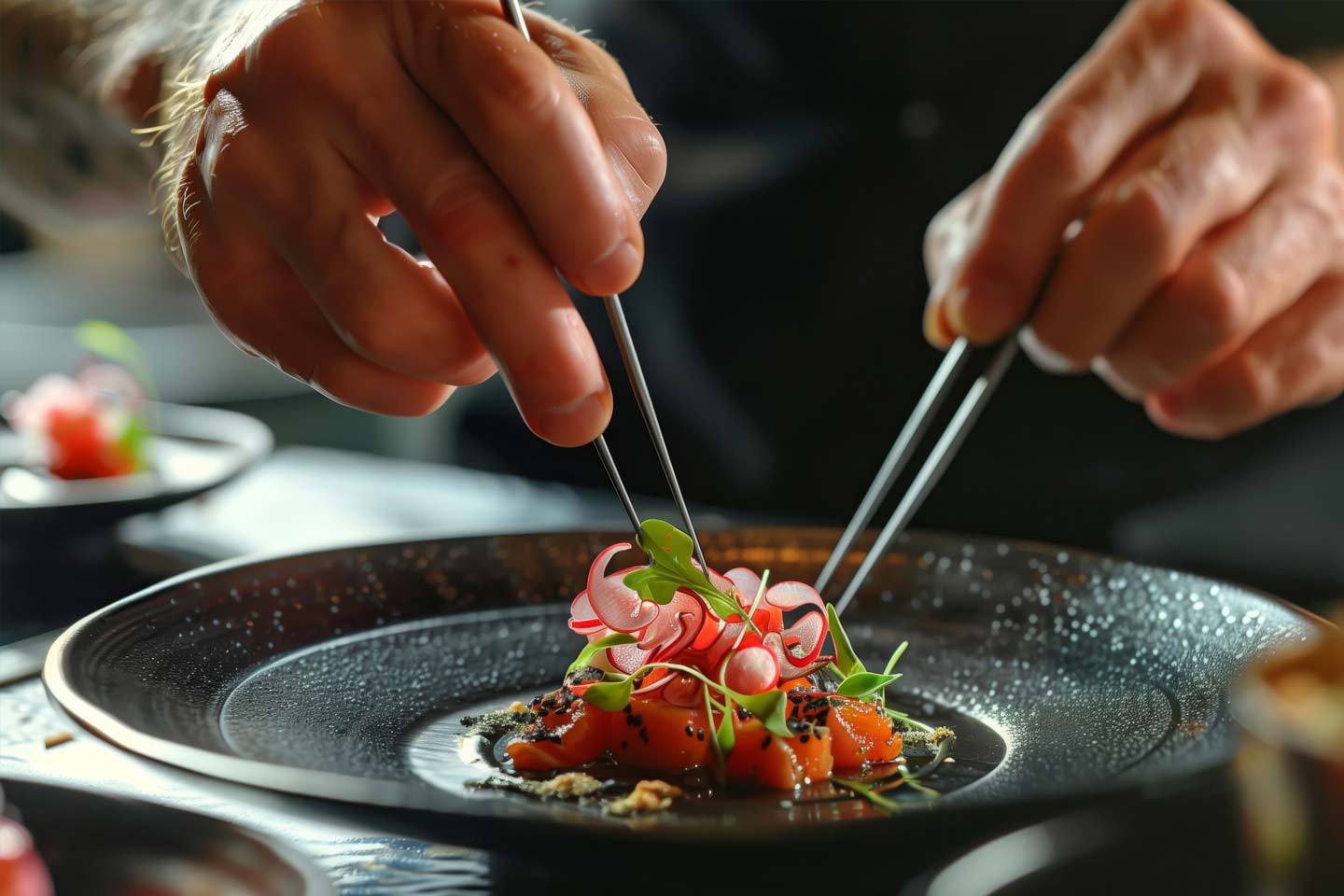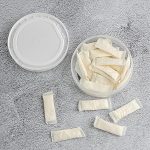The flavor palette: how chefs use wine in culinary creations
Wine has long been a staple in the culinary world, known for its ability to elevate dishes with its complex flavors and aromas. Chefs around the globe incorporate wine into their recipes in innovative ways, enhancing flavors and crafting unique dishes that delight the palate. This blog post explores how chefs use wine in culinary creations, revealing techniques and tips that go beyond the common knowledge, and showcasing the transformative power of wine in cooking.
The role of wine in cooking
Wine adds depth, complexity, and richness to dishes. It can enhance the natural flavors of ingredients, add acidity, and contribute to the overall harmony of a dish. The key components of wine that influence its culinary use include:
- Acidity: balances flavors and adds brightness to dishes.
- Tannins: contribute to the texture and structure of sauces and marinades.
- Aromatics: enhance the aromatic profile of the dish.
- Sweetness: balances savory or spicy elements and adds depth.
Stat insight: according to a survey by the international culinary center, 85% of professional chefs use wine regularly in their cooking, highlighting its importance in culinary arts.
Innovative culinary uses of wine
1. Deglazing and sauce making
Technique: deglazing involves adding wine to a hot pan after searing meat, poultry, or vegetables. The wine helps to lift the flavorful browned bits (fond) from the bottom of the pan, which are then incorporated into a sauce.
Example: a classic example is a red wine reduction sauce. After searing a steak, red wine is added to the pan to deglaze, followed by aromatics like shallots and garlic. The mixture is reduced to concentrate the flavors and finished with a pat of butter for richness.
2. Marinating
Technique: wine is often used in marinades to tenderize meat and infuse it with flavor. The acidity in wine helps to break down proteins, making the meat more tender.
Example: a popular marinade for beef involves red wine, olive oil, garlic, rosemary, and thyme. The meat is marinated for several hours or overnight, resulting in a flavorful and tender dish.
3. Poaching
Technique: poaching in wine is a gentle cooking method that imparts subtle flavors to the food. White wine is commonly used for poaching fish, poultry, and fruit.
Example: poached pears in red wine is a classic dessert. Pears are gently poached in a mixture of red wine, sugar, and spices like cinnamon and cloves until tender. The wine reduces to a syrupy consistency, creating a beautiful and flavorful dessert.
4. Baking and desserts
Technique: wine can be incorporated into baking to add moisture and flavor to cakes, pastries, and other desserts. Sweet wines like moscato or fortified wines like port are commonly used.
Example: a traditional italian dessert, zabaglione, uses marsala wine. Egg yolks, sugar, and marsala are whisked together over a bain-marie until thick and creamy, resulting in a light and airy custard.
5. Wine-infused ingredients
Technique: infusing ingredients with wine is a creative way to incorporate wine flavors into dishes. This can include making wine-infused salts, butters, or even wine jelly.
Example: wine-infused butter can be made by reducing wine to a syrupy consistency and mixing it into softened butter. This can be used as a flavorful spread or finishing touch for meats and vegetables.
Unique dishes showcasing wine
1. Coq au vin
Overview: a traditional french dish where chicken is braised in red wine, typically burgundy, along with mushrooms, onions, and bacon.
Flavor profile: the wine adds richness and depth to the dish, with the long braising time allowing the flavors to meld together beautifully.
2. Risotto al barolo
Overview: an italian dish where risotto is cooked with barolo wine, giving it a rich, deep red color and robust flavor.
Flavor profile: the barolo imparts its complex flavors of dark fruit, earthiness, and a touch of spice to the creamy risotto, creating a luxurious dish.
3. Sauternes sabayon
Overview: a light, frothy custard made with sauternes, a sweet french wine, whisked together with egg yolks and sugar.
Flavor profile: the sauternes adds a luscious sweetness and aromatic complexity, making the sabayon an elegant dessert.
Stat insight: the use of wine in cooking has been shown to enhance the perceived complexity and enjoyment of dishes. A study by the american journal of enology and viticulture found that dishes prepared with wine were rated 15% higher in flavor complexity compared to those without.
Tips for cooking with wine
1. Choose quality wine
Tip: use a wine that you would enjoy drinking. The quality of the wine will directly affect the flavor of your dish. Avoid using “Cooking wine,” which is often of lower quality and contains added salt.
2. Match the wine to the dish
Tip: consider the flavor profile of the wine and how it complements the ingredients. For example, use white wine for lighter dishes like seafood and poultry, and red wine for richer dishes like beef and lamb.
3. Reduce to concentrate flavors
Tip: reducing wine intensifies its flavors. Allow the wine to simmer and reduce by half or more to concentrate its taste and integrate it fully into the dish.
4. Balance acidity
Tip: the acidity in wine can brighten and balance flavors, but it’s important to use it judiciously. Too much acidity can overpower a dish, so taste and adjust as you cook.
5. Experiment and innovate
Tip: don’t be afraid to experiment with different wines and techniques. Wine is a versatile ingredient that can add a unique twist to traditional recipes.
Lesser-known insights
The maillard reaction
Insight: when wine is used in deglazing, it helps to incorporate the maillard reaction compounds (the browning that occurs when proteins and sugars cook together) into the sauce, enhancing its depth and complexity.
Aromatic compounds
Insight: the aromatic compounds in wine can enhance the sensory experience of a dish. For example, the terpenes in riesling can add floral and citrus notes, while the phenolics in red wine contribute to its tannic structure and depth.
Cultural and historical influence
Insight: wine has a deep cultural and historical significance in many cuisines. Understanding the traditional use of wine in different culinary traditions can provide inspiration and context for modern cooking techniques.
Conclusion
Wine is a powerful ingredient that can transform culinary creations, adding depth, complexity, and a touch of elegance. From deglazing and marinating to poaching and baking, the innovative use of wine in cooking showcases its versatility and ability to elevate flavors. By choosing quality wines, matching them to the dish, and experimenting with different techniques, chefs can craft unique and memorable dishes that delight the palate.
Whether you’re preparing a classic coq au vin or creating a new wine-infused dessert, the incorporation of wine into your culinary repertoire opens up a world of possibilities. Cheers to the art of cooking with wine and the delicious discoveries that await!

















